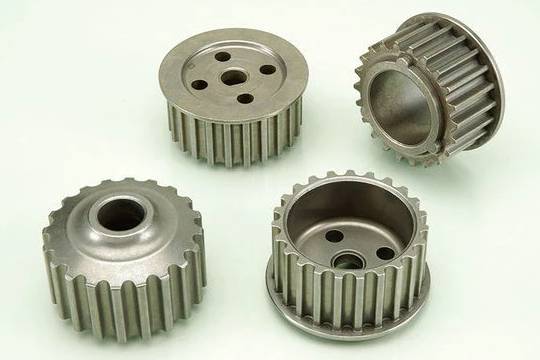Timing pulleys are critical components in mechanical systems, enabling precise synchronization and efficient power transmission. This article explores their fundamentals, history, functions, classifications, manufacturing methods, and key parameters.

1. What is a Timing Pulley?
A timing pulley is a toothed pulley designed to engage with a timing belt (or synchronous belt) to ensure precise rotational synchronization between shafts. Unlike smooth pulleys, its grooves and teeth prevent slippage, maintaining accurate timing in applications like engines, conveyors, and industrial machinery . The teeth mesh with the belt's teeth, creating a frictionless yet secure lock, ideal for applications requiring zero backlash.
2. History of Timing Pulleys
The concept of synchronous power transmission dates back to 1954 when Bill Devin invented the first timing belt drive system. This innovation revolutionized mechanical engineering by replacing traditional chain and gear systems with quieter, low-maintenance alternatives. Over time, advancements in materials (e.g., high-strength polymers, steel alloys) and manufacturing precision have expanded their use in automotive, aerospace, and robotics industries .
3. Funciton of Timing Pulleys
- Snchronization: Ensure shafts rotate in lockstep, critical for engine valve timing or conveyor synchronization.
- Torque Transmission: Transmit rotational force efficiently without slippage, even under high loads.
- Noise Reduction: Operate more quietly than chain drives due to reduced metal-to-metal contact.
- Low Maintenance: Eliminate the need for frequent lubrication, unlike gear systems.
4. Classification of Timing Pulleys
Timing pulleys are categorized based on design and application:
- By Drive Type:
- Open Belt Drives: Shafts rotate in the same direction.
- Cross Belt Drives: Shafts rotate oppositely, crossing the belt for angular synchronization.
5. Manufacturing Methods
Timing pulleys are typically produced using:
- CNC Machining: Precision cutting of metal blanks to achieve exact tooth profiles.
- Molding: For polymer pulleys, injection molding creates complex geometries efficiently.
- Gear Hobbing: A process to carve precise gear teeth into the pulley surface.
Post-manufacturing, pulleys undergo heat treatment for hardness and surface coating (e.g., anodizing) to enhance durability.
6. Key Parameters
When selecting a timing pulley, consider:
- Pitch: Distance between tooth centers (e.g., 3mm for MXL belts).
- Pitch Diameter: Effective diameter for torque calculation.
- Outside Diameter (OD): Outer edge diameter, affecting belt wrap and tension.
- Width: Accommodates belt thickness.
- Torque Capacity: Determined by material and tooth geometry.
Conclusion
Timing pulleys are indispensable in modern machinery, combining precision, efficiency, and reliability. From their inception in the 1950s to today's advanced applications, they continue to drive innovation across industries. Understanding their design, classification, and parameters ensures optimal performance in mechanical systems.
For further details, refer to engineering specifications or consult manufacturers specializing in synchronous drive systems.
Post time: May 10, 2011








